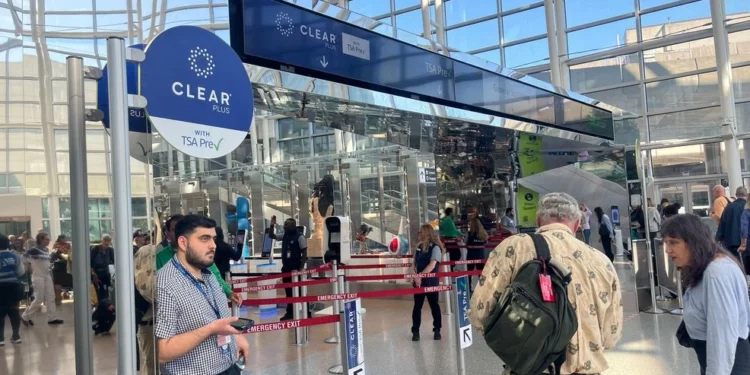Seattle-Tacoma International Airport placed 17th out of 20 “mega” airports in J.D. Power’s latest passenger satisfaction survey, reflecting ongoing challenges with construction disruptions and security delays.
The survey evaluated airports based on terminal facilities, security wait times, food and retail options, and baggage claim efficiency. Sea-Tac’s low ranking comes as the airport undergoes extensive infrastructure improvements designed to enhance long-term passenger experience.
Travelers expressed frustration with current conditions, particularly around departure areas and security checkpoints. “The departures traffic is bad. It’s always really, really backed up and it’s chaos,” Jennifer Hargraves said while waiting in a security line.
Construction-related disruptions have created accessibility challenges for passengers with mobility limitations. “It’s difficult for people who are in wheelchairs or immobile,” Robert Lachance noted while dropping off his elderly father. “Just imagine people 80 years old standing in one of these lines for 45 minutes.”
Some travelers have opted for alternative airports to avoid Sea-Tac’s congestion. “If it were my choice, I like to fly out of Portland,” said traveler Randall Harris.
Port of Seattle spokesperson Perry Cooper acknowledged the survey results while expressing optimism about ongoing improvements. “The good news is we are turning the corner on that and we are going to get better,” Cooper said. “We expect those rating numbers to get better, as well.”
Cooper noted that travelers using the new Checkpoint 1 near international arrivals, which opened this summer, have experienced significantly faster security processing. Airport data shows 99 percent of travelers clear all checkpoints in under 30 minutes, with 93 percent completing security screening in less than 20 minutes.
Several major construction projects are scheduled for completion by spring 2025, ahead of FIFA World Cup visitor influx. The most significant include a four-story Concourse C expansion featuring retail and restaurant spaces, plus a north terminal expansion with Alaska Airlines.
Infrastructure improvements also include additional lanes on the airport expressway leading to terminals. Officials estimate new Concourse C tenants could begin buildouts as early as November, with most spaces operational before spring.
“What we’ve been doing over the last several years is building up instead of out,” Cooper explained, describing the airport’s vertical expansion strategy to accommodate growing passenger volumes without expanding the facility’s footprint.
The construction timeline reflects Sea-Tac’s efforts to balance current passenger needs with long-term capacity requirements as the region’s primary aviation hub.
Airport officials acknowledge “construction fatigue” among travelers while emphasizing that current disruptions serve broader improvement goals. Passengers requiring wheelchair assistance can request services through airlines or directly from accessibility providers.







